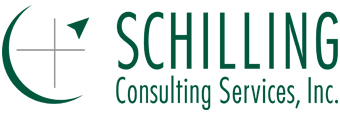Mission Matters
In a recent Strategic Planning work session with a client, a Board member asked if the organization was running the risk of “Mission Creep”, which they felt should be avoided. Also called “Mission Drift”, this is when organizations begin to diversify into services or products that are increasingly different from their original purpose and offerings. In the US and some other economies, when taken to the extreme in pursuit of more earnings, this sometimes resulted in a conglomerate, a holding corporation with many subsidiaries that are unrelated, or at least seem to be.
Stick to Your Knitting Critics of Mission Creep warn organizations not to stray too far from their core purpose, and to stick to what they know and do best. Moving into areas where the organization had no experience or fundamental capabilities, either of it own or though partnership, is certainly a high risk and could have severe consequences. And there is much to be said about knowing what you do best…and continuing to improve it.
We’re in the Railroad Business But taken to the extreme, a complete lack of any evolution in purpose and portfolio is also dangerous. This Mission Obsolescence ignores the reality of a constantly changing world, society, and customer. It’s true that with customers, some of what they need and want from your organization rarely (or never) changes (e.g. safety, respect). However some of your customers’ key quality characteristics - the attributes they use to evaluate how good your services or products are – do change over time. This is inevitable in a world of constant innovation. History has many examples of organizations and even entire industries that failed, or almost failed, due to mission obsolescence. Remember learning about how railroads almost completely disappeared because they thought they were in the railroad business, all the while choosing to ignore the rapidly expanding world of transportation (cars, trucks, planes)?
Timing…and Information So how does your organization find the prosperous “middle ground” between Mission Creep and Mission Obsolescence? By keeping an ear on what your customers need and want and what’s happening with organizations like yours. I refer to these as Market and Industry Assessments, respectively, and they are a critical early-stage component of Strategic Planning. If like many organizations, you develop a new Strategic Plan every three years (or maybe less), make sure the process starts with thorough Market and Industry Assessments.
But don’t stop there. The beginning of a new calendar year is one of several perfect times to refresh your understanding of what’s going on in your industry. Why? Because it is often when associations publish updated “Environmental Assessments” or other annual publications where they report on the latest trends, issues, and emerging best practices of interest to members. It’s also a good time, after the holiday rush starts to subside, to reach out to customers for their latest feedback and perceptions. Staying tuned to your customers and your industry on an ongoing basis is the best way to avoid Mission Obsolescence and build the rationale for well-timed and well-planned Mission Evolution.
Let me know if I can help with an Assessment refresh, or anything else.
All the best in 2024,
Jeff

Leave a Reply
Want to join the discussion?Feel free to contribute!